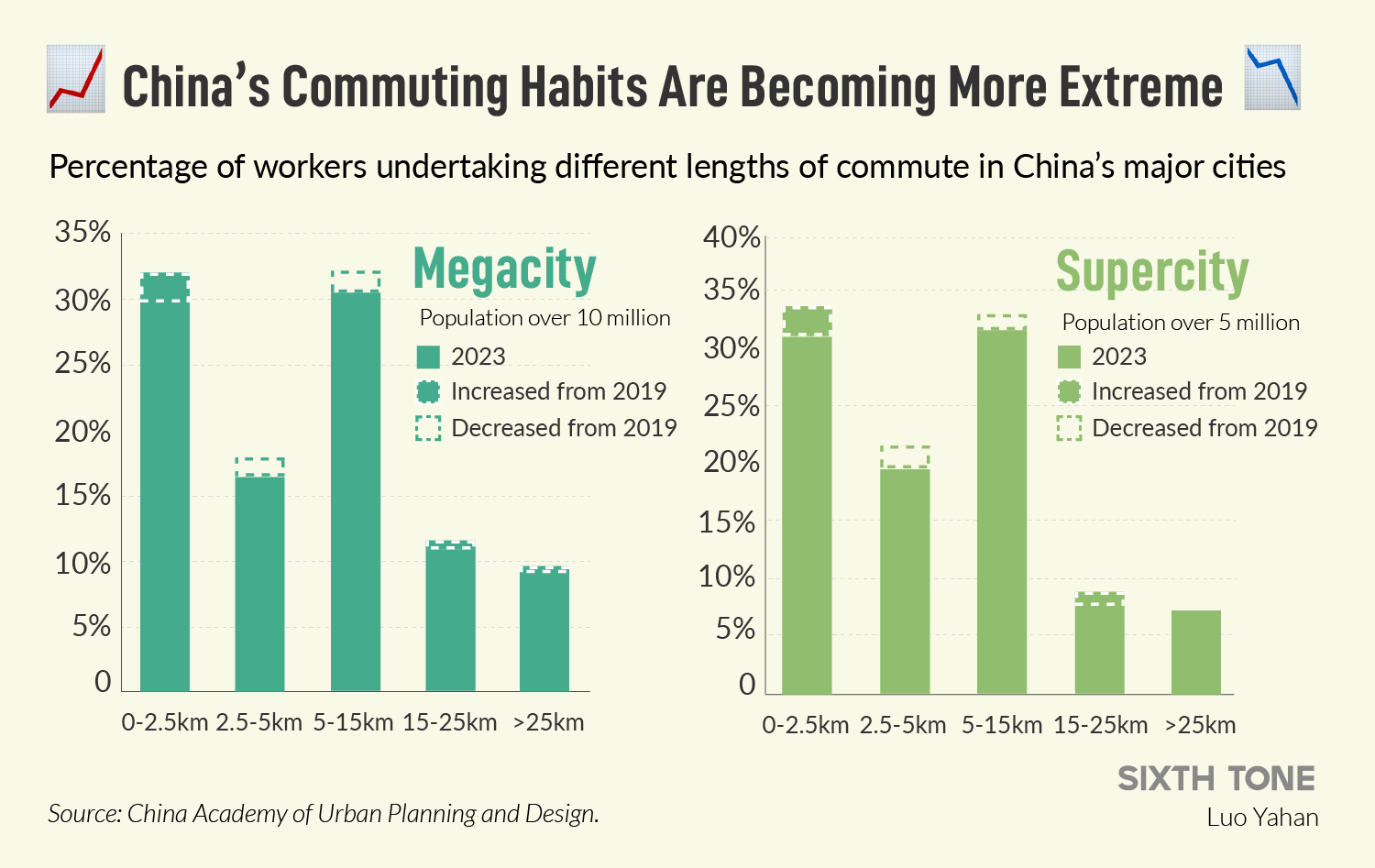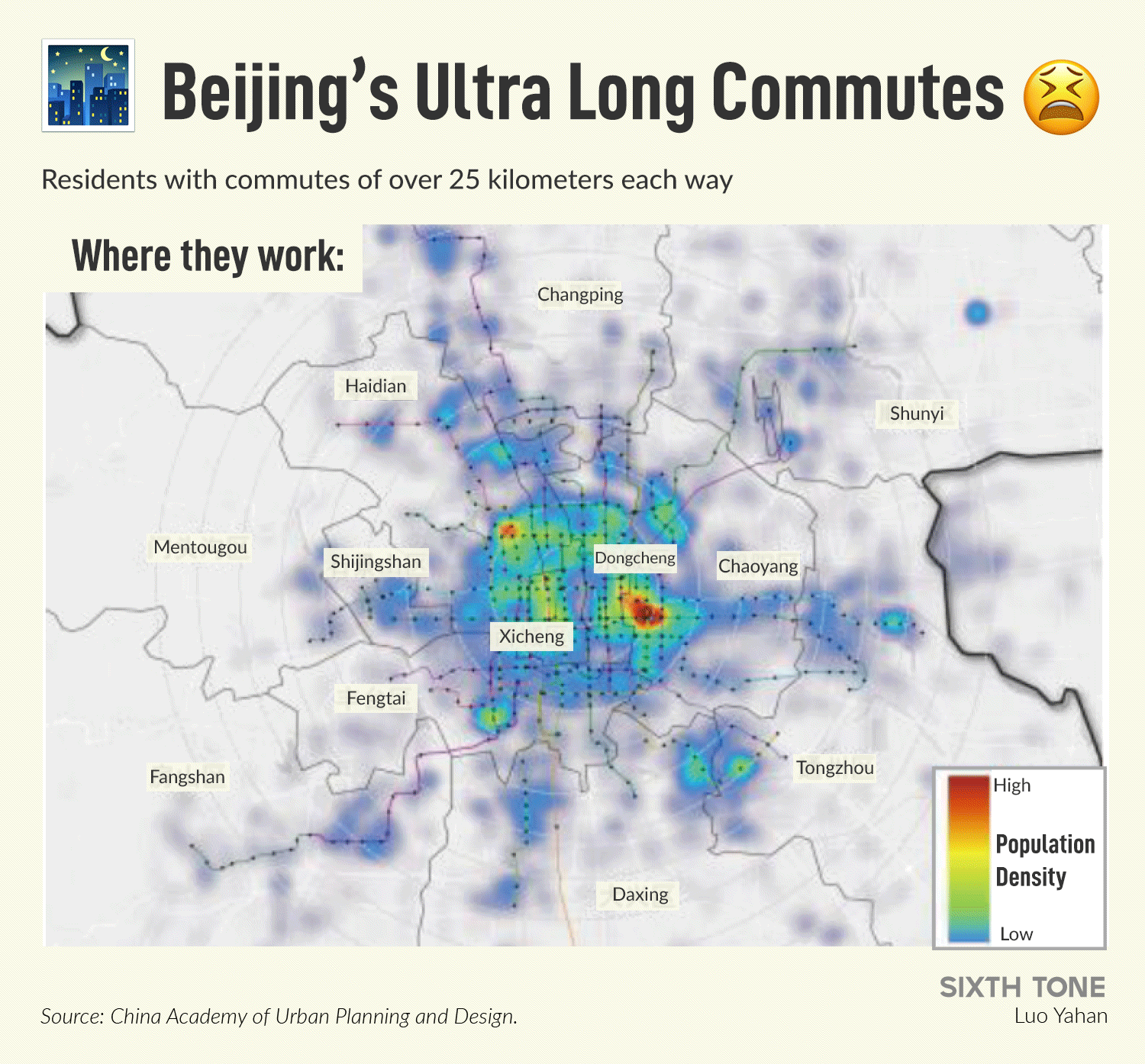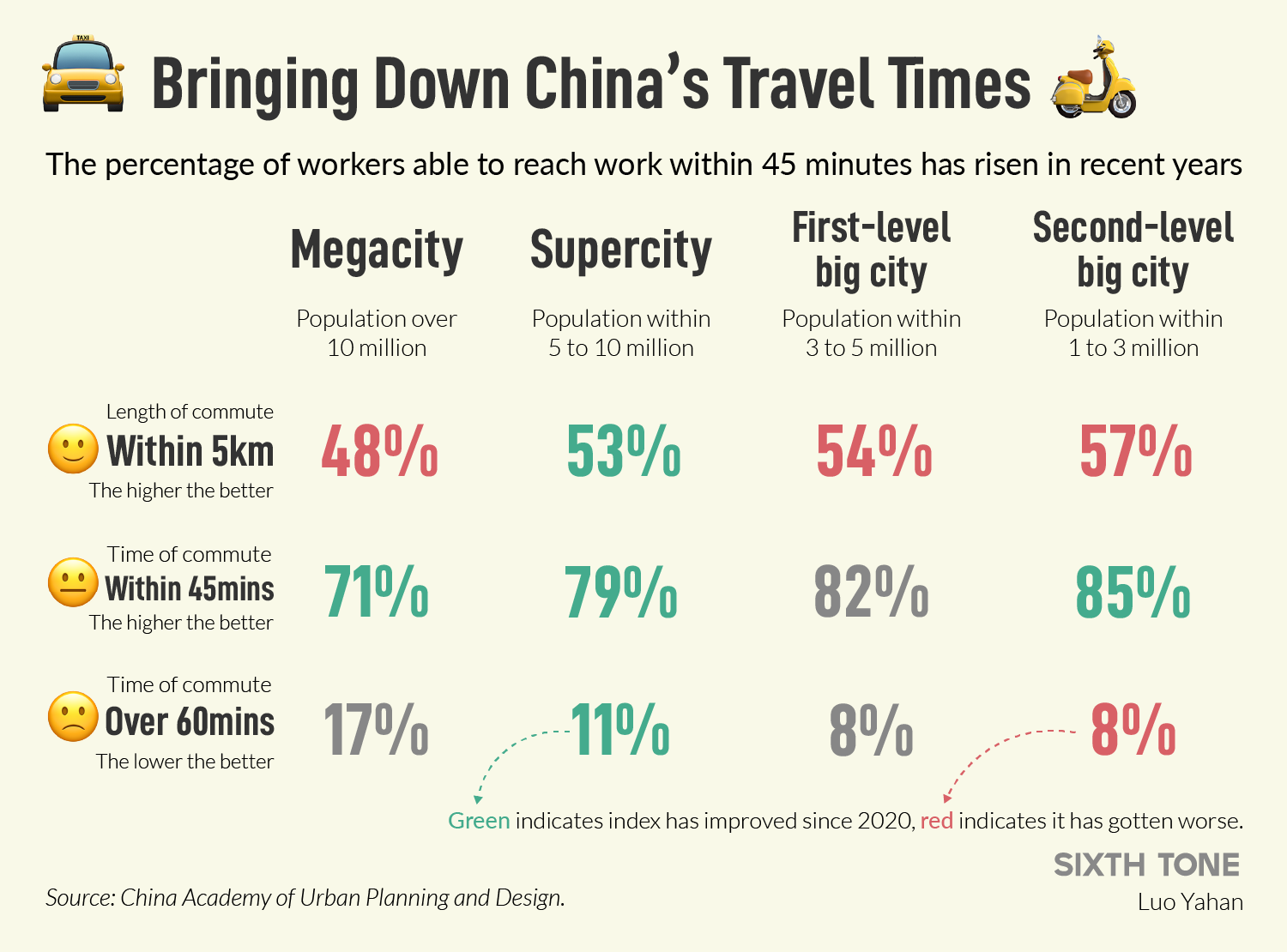
In Chinese Megacities, ‘Ultra-Long Commutes’ Are on the Rise
Extreme commuting is becoming more common in China’s megacities, with more workers undertaking “ultra-long” journeys to the office, a new report has found.
The new study — jointly produced by Baidu Maps, the China Academy of Urban Planning and Design, and a research center affiliated with the Ministry of Housing and Urban-Rural Development — analyzes how commuting habits have evolved over the past five years in 45 different Chinese cities.
The findings, released on Oct. 17, paint a picture of a growing polarization in commuting habits, especially in China’s largest metropolises, where very long and very short travel times are both becoming more common.
In cities with a population of over 5 million, the percentage of workers with an “ultra-long commute” — defined as a journey of over 90 minutes each way — has increased by 1% since 2019, according to the report.

Long commutes have become a hot-button issue in China over recent years, as rising living costs in megacities push more workers to move further out into the suburbs, where rent tends to be cheaper.
In recent years, several news stories involving workers having to make Herculean efforts to get to work have gone viral on Chinese social media, including one woman from the northern city of Tianjin who reportedly wakes up at 5 a.m. each day so that she can make it to her office over 260 kilometers away in Jinan.
The report has made such long-distance journeys an increasing focus of its research in recent years. In 2020, it began measuring the percentage of workers undertaking “extreme commutes,” which it defined as a journey of over one hour each way.
Extreme commutes are far more common in megacities with a population of over 10 million, according to the report. In 2023, 17% of residents in megacities had an extreme commute, compared with 8% of residents in cities with a population of between 1 million and 5 million.
And of the megacities, Beijing stands out as the city with by far the most extreme commuting habits. A whopping 28% of workers in the Chinese capital had an extreme commute in 2023, whereas the city with the second highest proportion of extreme commuters was Guangzhou with just 10%.
In 2023, the level of extreme commutes in China’s largest cities held steady, but “ultra-long commutes” — an even more extreme commute, with travel times of over 90 minutes each way — rose slightly, according to the report.

Over 8 million people in China now face ultra-long commutes, according to the report. Many of them are concentrated in Beijing: The report mapped China’s top 20 ultra-long commuting routes, and six of them were located in the capital. The longest route stretches 39 kilometers and takes up to two hours each way.
But the report also found signs of progress in some areas. The proportion of workers in cities of over 5 million people with short commutes of less than 5 kilometers each way rose by 2% year over year in 2023 — the first time this indicator has improved in four years.
Chinese authorities have been striving to reduce travel times for commuters over recent years, with the goal of creating “45-minute cities” in which 80% of urban residents can travel to the office in less than three-quarters of an hour.
In 2023, China inched further toward this target: 77% of urban residents were able to get to work in less than 45 minutes, a 1% increase compared with the previous year. The southern metropolis of Shenzhen also became the first Chinese megacity to surpass the 80% threshold, with 81% of residents enjoying a comfortable commute.

But China is likely to find it increasingly difficult to make further progress, the report cautioned. In recent years, officials have focused on reducing travel times by expanding cities’ light rail and metro networks, but this method presents diminishing returns over time.
In 2023, Chinese cities added around 800 kilometers of new metro lines, but the proportion of commuters covered by metro services only increased by 1%. The reduction in commuting times achieved by each new kilometer of metro line halved compared with 2022.
(Header image: Passengers at a subway station in Shenzhen, Guangdong province, Oct. 30, 2023. IC)










